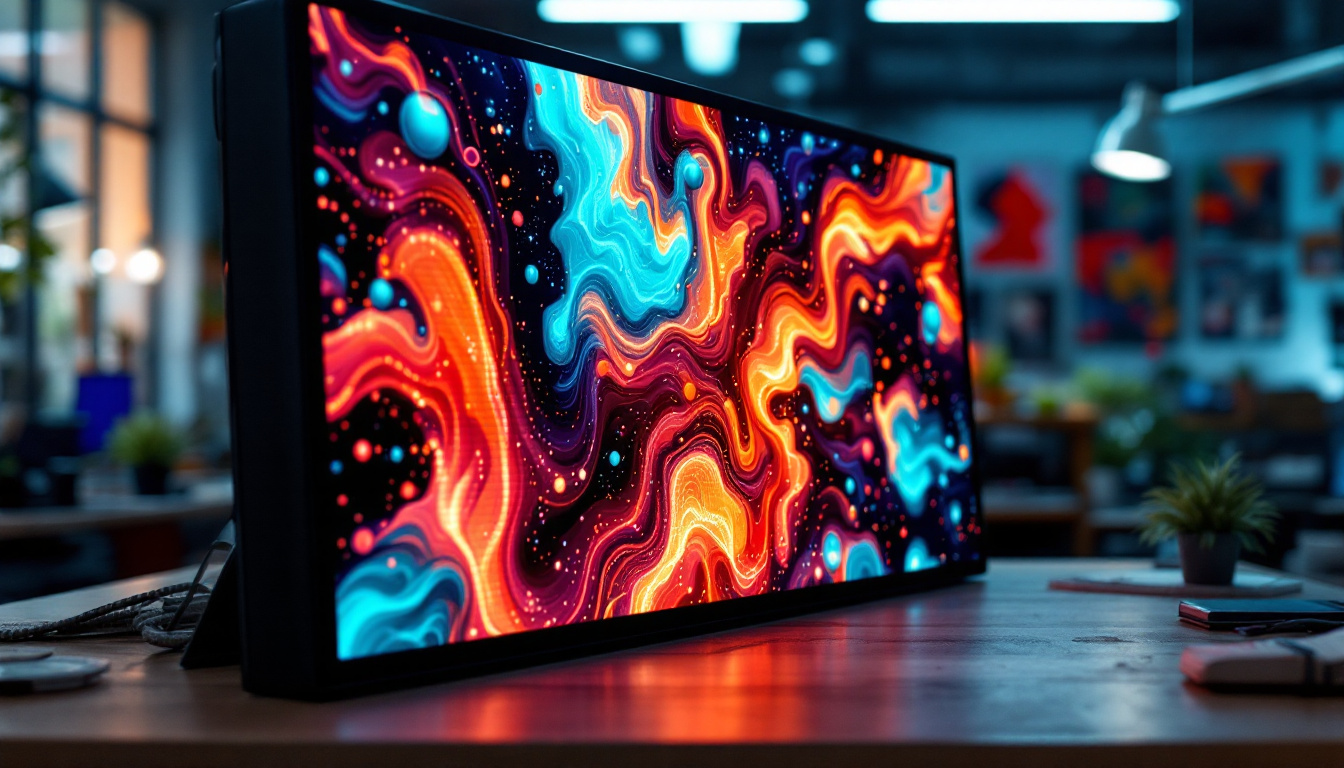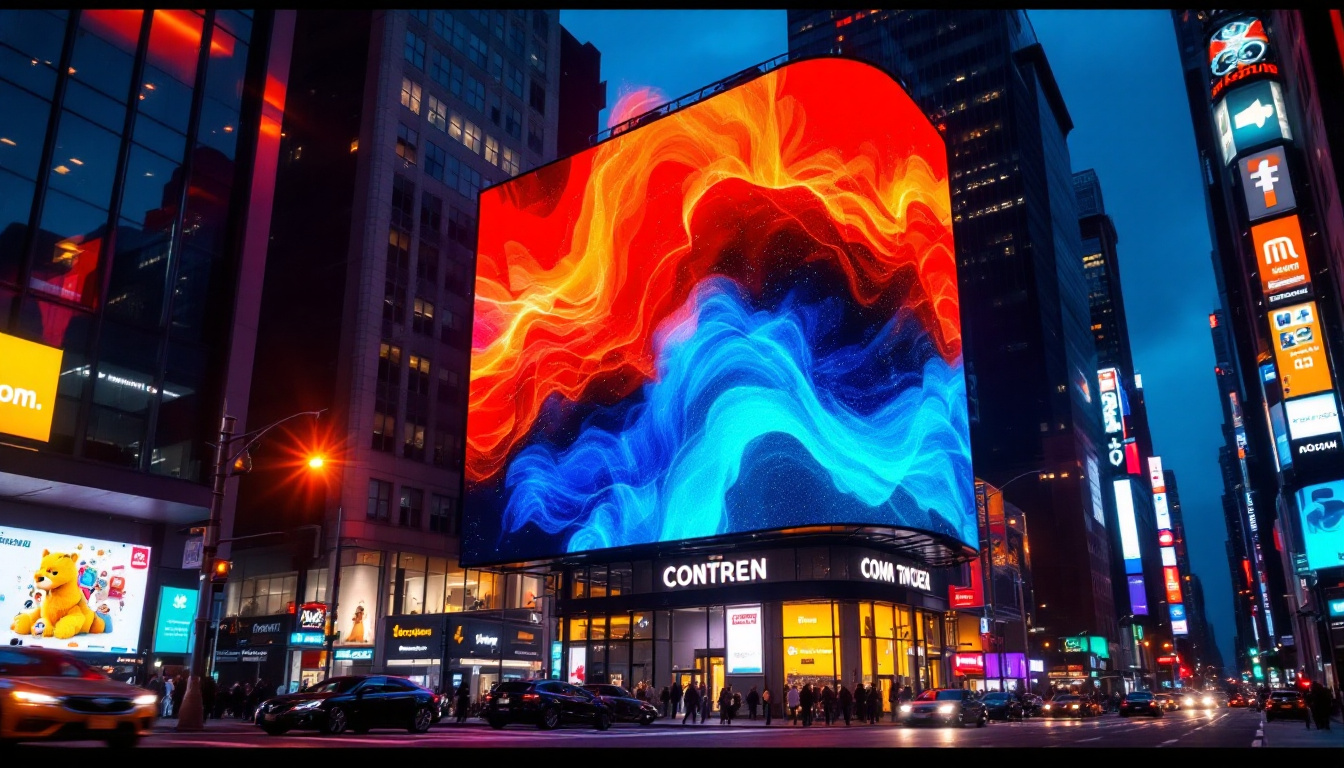What Is An LCD: LED Display Explained
In the realm of modern technology, displays play an essential role in how we interact with devices. Among the various types of displays available, LCD (Liquid Crystal Display) technology has become a staple in televisions, computer monitors, and smartphones. This article will delve into the intricacies of LCD technology, particularly focusing on LED (Light Emitting Diode) backlighting, which enhances the performance of LCD screens.
Understanding LCD Technology
LCD technology operates on the principle of manipulating light to produce images. Unlike traditional cathode ray tube (CRT) displays, LCDs use liquid crystals sandwiched between two layers of glass or plastic. These liquid crystals respond to electrical currents, allowing them to control the passage of light. As a result, LCDs are thinner, lighter, and more energy-efficient than their CRT counterparts. This efficiency has made LCDs the preferred choice for modern displays, from televisions to computer monitors and mobile devices.
The Components of an LCD
An LCD consists of several key components that work together to create images. The main parts include:
- Liquid Crystals: These are the core elements that change orientation when an electric current is applied, allowing them to block or allow light to pass through.
- Backlight: Since liquid crystals do not emit light on their own, a backlight is necessary to illuminate the display. This is where LED technology comes into play.
- Polarizers: These layers filter light waves, ensuring that only specific orientations of light pass through, which is essential for creating visible images.
Each of these components plays a crucial role in how an LCD functions, contributing to its overall performance and image quality. Additionally, advancements in LCD technology have led to the development of various types of displays, such as IPS (In-Plane Switching) and TN (Twisted Nematic), each offering different benefits in terms of color accuracy, viewing angles, and response times. This diversity allows consumers to choose displays that best meet their specific needs, whether for gaming, professional graphic design, or everyday use.
How LCDs Work
The operation of an LCD can be broken down into several steps:
- The backlight emits light, which passes through the first polarizer.
- The liquid crystals twist and align based on the electrical signals they receive, modulating the light that passes through them.
- The light then passes through a second polarizer, which further filters the light to create the final image seen on the screen.
This intricate process allows LCDs to produce vibrant images with varying levels of brightness and color depth, making them suitable for a wide range of applications. Moreover, the technology has evolved to include features like high dynamic range (HDR) and wide color gamut (WCG), enhancing the viewing experience by providing deeper blacks and more vivid colors. As a result, LCDs have become integral not only in consumer electronics but also in professional settings, where precise color representation is critical for tasks such as photo editing and digital art creation.
The Role of LED Backlighting
While LCD technology has been around for decades, the introduction of LED backlighting has significantly improved the performance of LCD displays. LED backlighting enhances brightness, color accuracy, and energy efficiency, making it a preferred choice for many manufacturers. This evolution in display technology has not only transformed consumer electronics but has also influenced various industries, including gaming, photography, and design, where visual fidelity is paramount.
Types of LED Backlighting
There are primarily two types of LED backlighting used in LCD displays:
- Edge-Lit LED: In this configuration, LEDs are placed along the edges of the screen. Light is then diffused across the display using a light guide panel. This design allows for thinner screens but may result in uneven brightness in some cases. Edge-lit displays are often favored in ultra-slim television models, where aesthetics and space-saving are critical considerations.
- Full-Array LED: This method uses a grid of LEDs placed directly behind the LCD panel. Full-array backlighting offers better control over brightness and contrast, as it allows for local dimming, enhancing the overall picture quality. This technology is particularly beneficial for high-definition content, where deep blacks and bright highlights are essential for an immersive viewing experience.
Each type has its advantages and disadvantages, influencing the choice of display depending on the intended use and desired quality. For instance, while edge-lit displays may be suitable for casual viewing, full-array options are often preferred by professionals in fields such as graphic design and video editing, where precision is crucial.
Benefits of LED Backlighting
The integration of LED backlighting into LCD technology has brought about numerous benefits:
- Improved Brightness: LED backlights can achieve higher brightness levels compared to traditional fluorescent backlights, making screens more visible in bright environments. This feature is especially advantageous for outdoor displays and environments with significant ambient light.
- Better Color Accuracy: LEDs can produce a wider color gamut, resulting in more vibrant and accurate colors. This capability allows for a more lifelike representation of images, which is crucial for photographers and videographers who rely on precise color reproduction.
- Energy Efficiency: LED technology consumes less power, leading to lower energy bills and a reduced carbon footprint. As sustainability becomes increasingly important to consumers, the energy-efficient nature of LED backlighting aligns well with eco-friendly practices.
These advantages have made LED-backlit LCDs a popular choice among consumers and professionals alike. Furthermore, the longevity of LED technology means that users can enjoy high-quality displays for years without significant degradation in performance. As the demand for high-resolution content continues to rise, the role of LED backlighting in enhancing visual experiences will only become more critical, paving the way for future innovations in display technology.
Comparing LCD with Other Display Technologies
While LCDs with LED backlighting are widely used, they are not the only display technology available. Understanding how they compare to other technologies can help consumers make informed choices.
LCD vs. OLED
Organic Light Emitting Diode (OLED) displays are often touted as a superior alternative to LCDs. Unlike LCDs, OLEDs do not require a backlight, as each pixel emits its own light. This leads to several key differences:
- Contrast Ratios: OLED displays can achieve true blacks by turning off individual pixels, resulting in superior contrast ratios compared to LCDs.
- Viewing Angles: OLEDs generally offer better viewing angles, maintaining color accuracy and brightness even when viewed from the side.
- Response Times: OLEDs have faster response times, making them ideal for fast-paced content like gaming and sports.
However, OLEDs can be more expensive to produce, and issues like burn-in can affect long-term performance. Therefore, the choice between LCD and OLED often depends on budget and specific use cases.
LCD vs. QLED
Quantum Dot LED (QLED) technology is another alternative that enhances LCD displays. QLEDs use quantum dots to improve color accuracy and brightness. Here are some distinctions:
- Color Performance: QLEDs can produce a wider range of colors compared to standard LCDs, thanks to the quantum dot technology.
- Brightness Levels: QLEDs can achieve higher brightness levels, making them suitable for bright rooms.
- Longevity: QLEDs tend to have a longer lifespan compared to OLEDs, as they are less susceptible to burn-in issues.
While QLEDs offer enhanced performance, they still rely on LCD technology, making them a hybrid solution that combines the best of both worlds.
Applications of LCD Displays
LCD displays are ubiquitous in modern life, appearing in a variety of devices and settings. Their versatility makes them suitable for numerous applications.
Consumer Electronics
LCDs are commonly found in consumer electronics such as:
- Televisions: Most modern TVs utilize LCD technology, often with LED backlighting, to deliver high-definition content.
- Smartphones: LCDs are widely used in smartphones, providing clear and vibrant displays for apps and media.
- Tablets and Laptops: Many portable devices rely on LCD technology for their displays, balancing performance and power efficiency.
The adaptability of LCDs makes them a preferred choice for manufacturers in the consumer electronics market.
Industrial and Commercial Uses
Beyond consumer electronics, LCD displays are also utilized in various industrial and commercial applications:
- Medical Equipment: LCDs are used in medical imaging devices, providing clear visuals for diagnostics.
- Digital Signage: Many businesses use LCD screens for advertising and information dissemination in public spaces.
- Control Panels: LCDs are employed in control panels for machinery and vehicles, offering essential information to operators.
These applications highlight the reliability and effectiveness of LCD technology in professional settings.
Future of LCD Technology
As technology continues to evolve, so does the landscape of display technology. LCDs are likely to adapt and improve, incorporating new advancements to maintain their relevance.
Innovations in LCD Technology
Several innovations are on the horizon for LCD technology:
- Mini-LED Backlighting: This technology uses smaller LEDs for backlighting, allowing for more precise control over brightness and contrast.
- MicroLED Displays: MicroLEDs are tiny self-emissive LEDs that offer many benefits of OLEDs without the drawbacks, potentially revolutionizing LCD technology.
- Enhanced Color Gamut: Future LCDs may incorporate advanced color technologies to further improve color reproduction and accuracy.
These advancements could ensure that LCD technology remains competitive in a rapidly changing market.
Environmental Considerations
As sustainability becomes increasingly important, the display industry is focusing on reducing its environmental impact. LCD manufacturers are exploring eco-friendly materials and energy-efficient production processes to minimize waste and energy consumption.
Moreover, recycling programs for old LCD displays are being implemented to ensure that hazardous materials are disposed of responsibly, contributing to a more sustainable future.
Conclusion
LCD technology, particularly when enhanced with LED backlighting, has become a cornerstone of modern display solutions. Its versatility, energy efficiency, and ability to produce vibrant images make it a popular choice across various applications. While alternatives like OLED and QLED offer unique advantages, LCDs continue to evolve, ensuring their place in the ever-changing landscape of display technology. As innovations emerge and environmental considerations take center stage, the future of LCD displays looks promising, paving the way for even more advanced and sustainable solutions.
Discover Cutting-Edge LED Displays with LumenMatrix
As you consider the future of display technology and the role LCDs play in delivering high-quality visual experiences, LumenMatrix stands at the forefront of innovation. With a diverse range of solutions from Indoor and Outdoor LED Wall Displays to specialized options like Vehicle and Sports LED Displays, LumenMatrix is committed to enhancing your brand’s visibility. Whether you’re looking to create immersive environments with Floor LED Displays or seeking the sleek design of LED Poster Displays, our mission is to empower your visual communication with clarity and impact. Check out LumenMatrix LED Display Solutions today and see how our state-of-the-art technology can transform your space.































